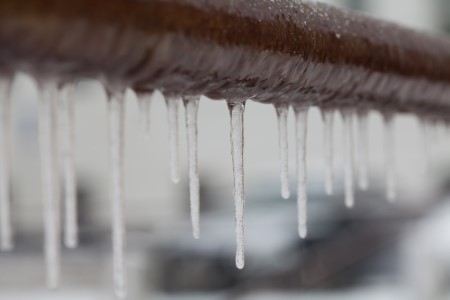Preventing Frozen Pipes in Your Home

During the cold New York winters, frozen pipes are an ever-present threat for homeowners in Westchester. A deep freeze or sudden cold snap can easily cause any water that's accumulated inside of your piping to become frozen solid. The newly solid water can inflict up to two thousand pounds of pressure per square inch on the pipes themselves, which is often much more than they can withstand, causing them to break. Replacing or repairing the pipes that have burst could cost thousands of dollars, but fortunately, frozen pipes can often be prevented. The pipes that are most likely to freeze tend to be located in the interiors of outside walls, in sink piping on outside walls, or in crawlspaces that aren't heated. Here are some general tips for helping to prevent your pipes from freezing, as well as what to do if the water in a pipe has already become frozen.
6 Ways to Prevent Frozen Pipes
- Keep your garage door closed during the winter. There could very well be water pipes there. When you keep the doors closed whenever possible, it helps to keep the temperatures stable and prevent any water inside from becoming frozen.
- Bring hoses inside when not in use. Also, be sure to drain the water out of them. It can also help to drain and cover the outside hose bibs to further prevent ice from forming.
- Drain water out of swimming pools and hose sprinklers, following the manufacturer's instructions whenever possible. Never use antifreeze, which is dangerous and unsafe, as well as bad for the environment.
- Keep your heater or furnace running at night. Although it may seem like a good idea to turn down the heat at night to save money, this puts you at risk for frozen pipes. It's a good idea to keep the temperature up to at least 50 or 55 degrees Farenheit to be safe.
- Keep the heat on, even if you're not at the house. If you let the house get cold when you're not home, your pipes might very well freeze. It's worth the expense to keep the heater on, warming your home to at least 50 degrees to prevent frozen pipes.
4 Good Ways to Thaw Your Pipes
If your pipes have already frozen, this can luckily be reversed much of the time, often without any lasting damage. If you turn on a faucet any only a tiny trickle of water comes out, then chances are, you've got a frozen pipe. Here are some ways to thaw the pipes out again and restore water flow.
- Keep your faucet open. Run water continuously through the pipe. A constant flow of water will help to melt the ice faster.
- Apply heat to the outside of the pipes. You can use electric hair dryers, towels soaked in hot water, or electric heating pads, applied directly to the outsides of the pipes. Space heaters can also help melt the ice, though you should never use an open flame.
If you have one frozen pipe, make sure to check other faucets in your home as well to see if the pipes have frozen on the inside. If you either don't have access to the pipes, or otherwise can't thaw them completely, you should definitely call a professional from a trusted local plumbing company to help you safely and completely thaw your pipes and restore full water flow in your home.
